Quali sono le batterie del server rack?
Se hai studiato moderno accumulo di energia, Soprattutto per la potenza solare o di backup, Probabilmente hai incontrato il termine "batteria del server rack." Cosa sono esattamente, E perché sono diventati uno standard professionale per la costruzione di sistemi energetici affidabili e scalabili?
Una batteria del server rack è una batteria al litio ad alte prestazioni, in genere utilizzando LFP 48V sicuro e di lunga durata (Fosfato di ferro al litio) chimica, Costruito in un formato standardizzato di larghezza da 19 pollici. Questo design consente ai moduli della batteria di essere installati in modo ordinato e sicuro ("Craved") in un gabinetto del server. Sono i blocchi edili modulari di uno spazio efficiente, organizzato, e sistema di accumulo di energia della batteria facilmente espandibile (BESS).
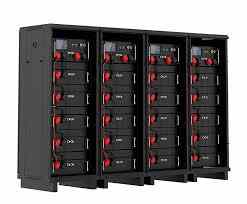
A Gycx Solar, Nostro 48v batteria per montaggio su rack Le soluzioni sono al centro dei sistemi energetici avanzati che progettiamo. Forniscono i nostri clienti in Corea del Sud e oltre con un potente, flessibile, e fondazione a prova di futuro per la loro indipendenza energetica. Rispondiamo ad alcune delle domande più comuni sulla costruzione di un sistema con queste batterie.
Come connettersi 4 batterie per ottenere 48 V?
Un modo comune per costruire un banco di batterie da 48 V in passato era utilizzare più piccolo, batterie più comuni. Come viene fatto questo, e come si confronta con l'utilizzo di un moderno modulo batteria a rack da 48 V?
Per creare un sistema da 48 V da quattro singole batterie, devi usare quattro batterie identiche da 12 V. e collegali elettricamente in serie. Questo significa cablarli in una catena: il positivo (+) Terminale della prima batteria si collega al negativo (-) del secondo, il positivo (+) del secondo si collega al negativo (-) del terzo, e così via. La tensione totale attraverso i terminali aperti rimanenti sarà di 48 V.
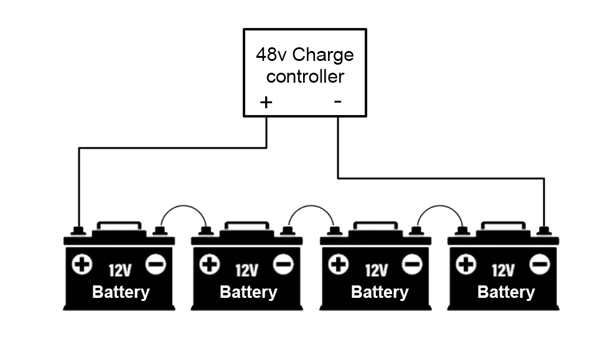
Immergersi più in profondità: Cablaggio della serie e soluzione moderna
Il collegamento delle batterie in serie richiede un'attenta attenzione ai dettagli:
- L '"identico" Regola: Questa è la parte più critica. Quando si collega in serie, Tutte e quattro le batterie da 12 V deve essere identico in chimica (PER ESEMPIO., Tutti LFP o tutti gli AGM), Amplora (Ah) capacità, marca, E, idealmente, Età e lotto di produzione. L'uso di batterie non corrispondenti causerà gravi squilibri, portando a prestazioni scadenti, fallimento prematuro delle batterie più deboli, e potenziali pericoli per la sicurezza.
- La via del cablaggio: Crei un singolo percorso affinché la corrente fluisca attraverso tutte le batterie. L'uscita finale a 48 V è presa dal terminale positivo principale della prima batteria nella catena e dal terminale negativo principale dell'ultima batteria.
- Il vantaggio moderno: Questo è dove un moderno 48v batteria per montaggio su rack Il modulo mostra il suo valore. Uno singolo dei nostri moduli è Già Un'unità 48V pre-ingegnerizzata.
- Semplicità: Non devi preoccuparti del cablaggio di serie complesse o del rischio di cellule non corrispondenti.
- Sicurezza: Ogni modulo a 48 V contiene il proprio sistema di gestione avanzata della batteria (BMS) che bilancia perfettamente tutte le cellule interne, Un compito molto più difficile in una serie di batterie da 12 V di serie fai da te.
- Scalabilità: Per aumentare la tua capacità energetica, Aggiungi semplicemente un altro modulo 48 V in parallelo, che è una connessione molto più sicura e più semplice.
Mentre tu Potere Crea una banca da 48 V da quattro batterie da 12 V., L'uso di moduli 48V a scopo appositamente costruito è il più sicuro, più semplice, e un approccio più professionale.
Quanto tempo a 48 batteria volt 100ah per ultima?
Una batteria da 48 V 100 ah è una dimensione molto popolare per la conservazione solare residenziale. È una notevole quantità di energia, Ma per quanto tempo può effettivamente alimentare la tua casa? La risposta dipende interamente dal consumo di elettricità.
UN 48V 100ah batteria negozi 4,800 watt-ore (Wh) O 4.8 Kilowatt-Hours (kWh) di energia. Quanto tempo durerà viene calcolato dividendo questa energia totale per carico elettrico (in watt). Per esempio, Potrebbe alimentare un continuo 480-carico di watt per circa 10 ore, o un accendino 200-carico di watt per circa 24 ore.
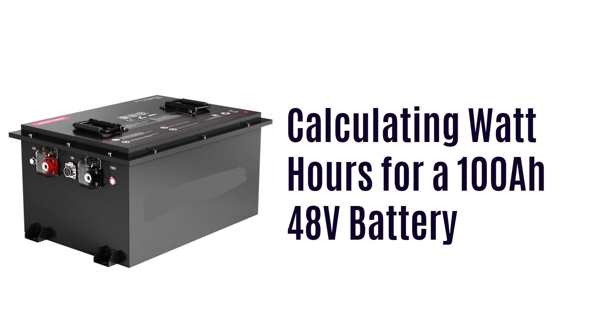
Immergersi più in profondità: Calcolo del tuo runtime
Camminiamo attraverso la semplice matematica:
Fare un passo 1: Trova l'energia totale nelle ore di watt (Wh)
- Formula:
Energy (Wh) = Voltage (V) x Capacity (Ah) - Calcolo:
48V x 100Ah = 4,800 Wh(O 4.8 kWh)
Fare un passo 2: Calcola il runtime in base al carico
- Formula:
Runtime (Hours) = Total Energy (Wh) / Load (Watts)
Scenari di esempio per una famiglia coreana:
- Carichi essenziali (ca.. 300W): Diciamo durante un'interruzione, Stai gestendo il tuo frigorifero ad alta efficienza, alcune luci a LED, Il tuo router Internet, e caricare i tuoi telefoni.
4,800 Wh / 300 W = 16 hours
- Carichi moderati (ca.. 800W): Aggiungi una TV e un computer desktop agli elementi essenziali.
4,800 Wh / 800 W = 6 hours
- Carico pesante (ca.. 2,000W): Decidi di eseguire un condizionatore d'aria portatile o un apparecchio ad alta potenza.
4,800 Wh / 2,000 W = 2.4 hours
Questo è il motivo per cui il nostro solare Gycx 48v batteria per montaggio su rack I sistemi sono modulari. Un 100ah (4.8kWh) Il modulo è un ottimo punto di partenza, Ma se hai bisogno di tempo di esecuzione più lungo, Possiamo facilmente aggiungere un secondo o terzo modulo in parallelo per raddoppiare o triplicare la tua capacità.
Quanti pannelli solari hanno bisogno per una batteria da 48 V?
Hai il tuo 48Batteria v sistema; Ora devi caricarlo con il solare. Come dimension l'array solare per assicurarti che le batterie vengano caricate in modo efficace ogni giorno?
Il numero di pannelli solari necessari dipende dalla capacità della batteria, Il clima della tua posizione, e la potenza dei pannelli. Ricaricare in modo affidabile a 48In 100ah (4.8 kWh) batteria quotidianamente in un clima come quello del Sud, Con le sue stagioni distinte, In genere avresti bisogno di un array solare di circa 1.5 KW a 2.5 kW. Questo si traduce in circa 4 A 6 moderno, pannelli solari ad alta efficienza 400W.
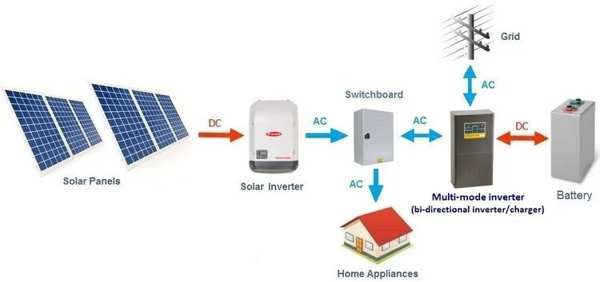
Immergersi più in profondità: Dimensionamento per un clima di quattro stagioni
Ecco come ci avviciniamo al dimensionamento di un array solare a Gycx Solar:
- Energia da reintegrare: Dobbiamo rimettere l'energia che usi quotidianamente. Per a 4.8 Batteria KWH usando 90% della sua capacità, Questo è circa 4.3 kWh.
- Ore di punta del sole (PSH): Questa è la variabile chiave. In Corea del Sud, Questo cambia con le stagioni. Potresti ottenere 4.5-5 PSH in estate, ma solo 2.5-3 PSH in inverno. Numero spesso l'array in base a un valore medio o primavera/autunno tutto l'anno (PER ESEMPIO., 3.5 - 4 PSH) per garantire una ricarica adeguata per la maggior parte dell'anno.
- Perdite di sistema: Teniamo conto dell'energia persa dal calore del pannello, cablaggio, e efficienza del controller inverter/carica (in genere a 15-25% fattore di perdita).
- Il calcolo:
- Energia solare richiesta (kW) = Energia giornaliera necessaria (kWh) / (Picco di sole ore X Fattore di efficienza)
- Esempio (basato su un conservatore 3.5 PSH):
4.3 kWh / (3.5 hours x 0.80 efficiency) = 1.54 kW (1540 Watts) - Questo significherebbe
1540W / 400W per panel ≈ 4 panels. Essere al sicuro e garantire una buona carica anche nei giorni tutt'altro che perfetti, Potremmo raccomandare 5 O 6 pannelli.
Gycx Solar Story: "Un cliente a Seoul era preoccupato per la ricarica invernale per il loro sistema di batterie a 48 V. Abbiamo progettato il loro array in base ai dati di ora in inverno inferiore invernali, Garantire che anche in una chiara giornata invernale, Le loro batterie riceverebbero una carica significativa. È questo tipo di pianificazione specifica del clima che rende un sistema affidabile tutto l'anno."
Posso utilizzare pannelli solari a 12 V su un sistema 48V?
Potresti avere accesso ad alcuni pannelli solari standard 12V e vuoi usarli per caricare il tuo nuovo, Banco della batteria a 48 V più efficiente. È possibile, o sono incompatibili?
sì, È possibile utilizzare pannelli solari da 12 V su un sistema a 48 V, ma solo con la giusta configurazione. Voi Deve collegare i pannelli 12V in serie per aumentare la loro tensione combinata a un livello abbastanza alto da caricare una batteria da 48 V. Inoltre, Voi Deve usare un MPPT di alta qualità (Inseguimento del punto di massima potenza) Controller di carica solare, che può gestire in modo efficiente la differenza di tensione tra i pannelli e la batteria.
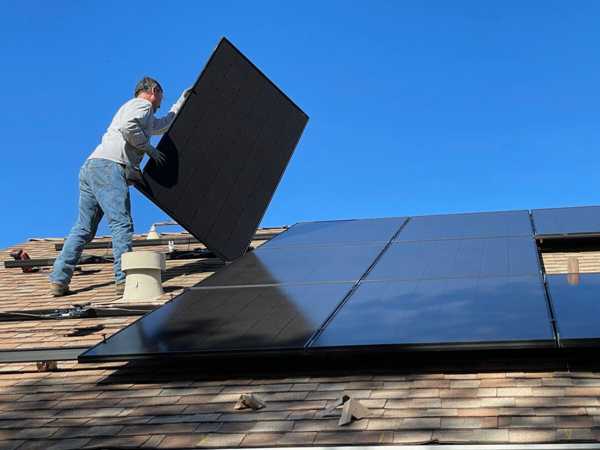
Immergersi più in profondità: Le chiavi per la compatibilità
Ecco cosa è necessario per far funzionare questo:
- Connessione in serie di pannelli: Per caricare una batteria da 48 V, Il tuo array solare deve produrre una tensione significativamente più alta (in genere 60v o più). Un singolo "12v" Il pannello di solito ha una tensione di potenza massima (Vmp) di circa 18 V..
- Perciò, devi connetterti almeno Quattro identici pannelli 12V in serie (positivo a negativo) Per ottenere una tensione di sistema adeguata (4 Pannelli x ~ 18VMP = ~ 72V).
- Un controller di carica MPPT è essenziale:
- Un PWM economico (Modulazione della larghezza dell'impulso) Il controller non può essere utilizzato. Richiede che la tensione del pannello sia molto vicina alla tensione della batteria.
- UN Controller MPPT è un sofisticato convertitore DC a DC. Può prendere l'alta tensione dai tuoi pannelli cablati in serie (PER ESEMPIO., 72v) ed efficientemente "calpestalo" alla corretta tensione di ricarica per la batteria da 48 V, catturare la massima quantità di potenza dai tuoi pannelli nel processo.
- L'approccio professionale: Durante l'utilizzo dei pannelli da 12 V è tecnicamente possibile, I moderni progetti di sistema per batterie a 48 V di solito utilizzano pannelli a tensione più alta dall'inizio (PER ESEMPIO., "24v" pannelli o pannelli residenziali standard da 60/72 celle con un VMP di 30-40 V). Il cablaggio solo due di questi in serie è più semplice e spesso più efficiente.
Ciò evidenzia l'importanza della progettazione del sistema. A Gycx Solar, Garantiamo ogni componente, dai pannelli solari al controller di carica e al 48v batteria per montaggio su rack, è perfettamente abbinato per una sicurezza ottimale, prestazione, ed efficienza.
Una batteria del server rack è una pietra miliare del moderno, Riproduzione di energia scalabile. Capire come configurare, carica, e dimensioni un sistema attorno a 48V standard1 è la chiave per sbloccare i suoi benefici. Usando moduli 48V appositamente costruiti, semplifichi l'installazione e migliora la sicurezza, creando una base solida per il tuo indipendenza energetica2.
Se hai domande sulla progettazione del tuo sistema energetico a 48 V o vuoi saperne di più sulle nostre soluzioni di batteria a montaggio di rack professionali, Il nostro team di esperti di Gycx Solar è pronto ad aiutare. Contattaci per una consultazione!
Esplorare questo link approfondirà la tua comprensione del ruolo dello standard 48V nella conservazione dell'energia, Migliorare l'efficienza del tuo sistema. ↩
Questa risorsa fornirà approfondimenti sul raggiungimento dell'indipendenza energetica, Fondamentale per la vita sostenibile e la riduzione della dipendenza dalle fonti di potere tradizionali. ↩
